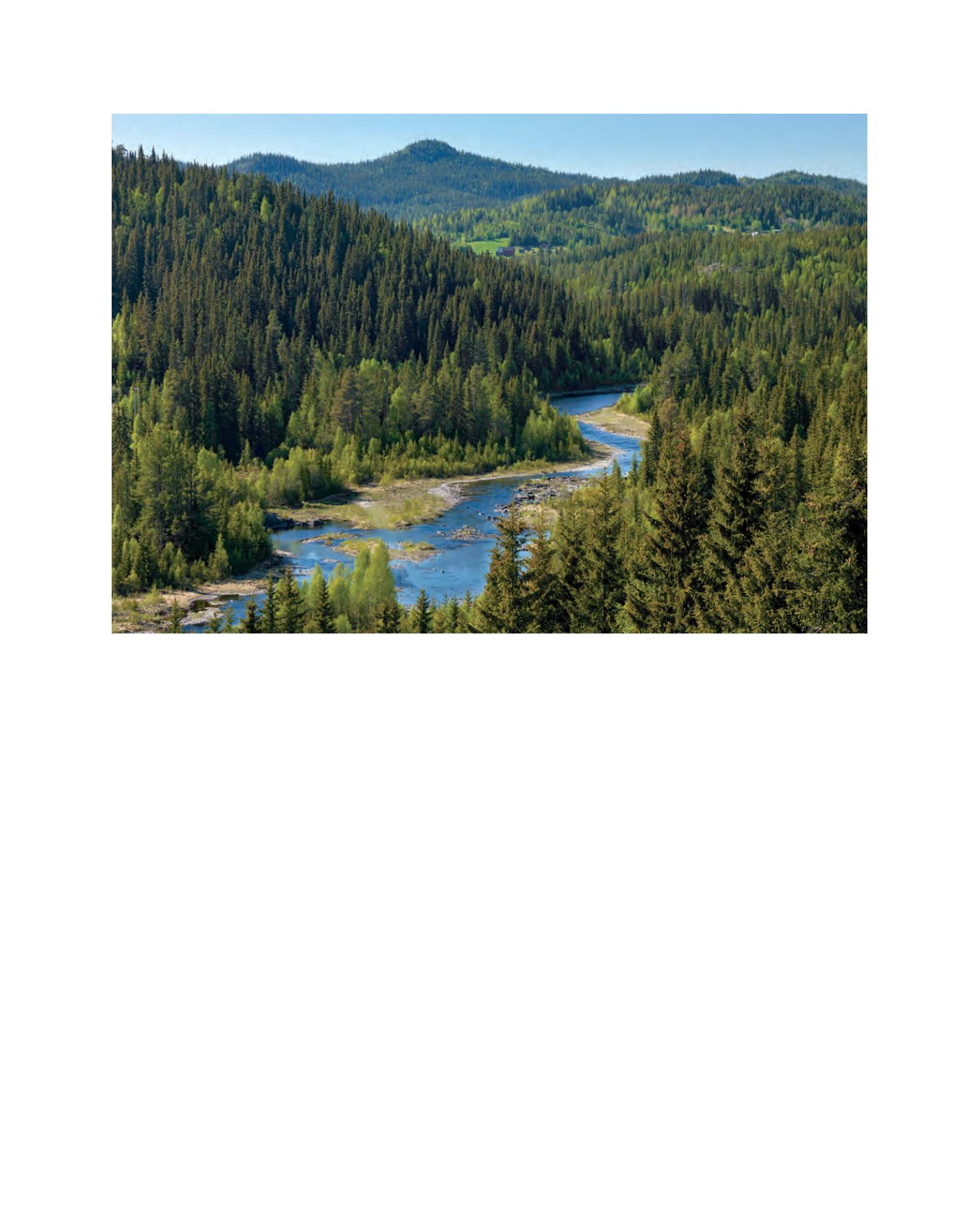

[
] 183
the possibility to hunt in privately owned forests, on common land
and in municipal and state-owned forests.
Forests and climate change
Forests have many important functions related to climate. In addi-
tion to the impact on water balance and local climatic conditions,
the world’s forest ecosystems also represent considerable stores of
carbon that can impact on global warming if the carbon is emitted
into the atmosphere. On the other hand, growing stocks are impor-
tant carbon sinks that can reduce the impact of anthropogenic
emissions. Through photosynthesis the forests are, for the time
being, capturing and storing carbon equivalent to more than half of
the total emissions of CO
2
in Norway.
According to the Intergovernmental Panel on Climate Change
(IPCC), sustainable forest management, with the aim of maintaining
or increasing carbon storage in forest ecosystems while producing
wood for timber, fibre and bioenergy, is an important contribu-
tion to climate change mitigation. As biological carbon is part of
nature’s own carbon cycle, the amount of carbon that is emitted
when burning forest biomass is the same as when biomass decom-
poses naturally. As long as we maintain our forests, carbon will be
sequestered through the photosynthesis.
As less than half of the increment in Norwegian forests is harvested
today, it is possible to increase the use of wood for production of energy
and as building materials in order to reduce the consumption of fossil
fuels. This can contribute to further reduction of CO
2
emissions.
This understanding is the basis for the Governmental
White Paper No. 39 (2008-2009)
Climate challenges –
Agriculture part of the solution,
and
Climate Cure 2020
(2010), a study led by the Norwegian Climate and
Pollution Agency (KLIF) to assess the available options
to reduce greenhouse gas emissions.
Programmes for increased use of wood and
bioenergy
An important goal for both Government and the wood
processing industry is to increase the use of wood
where it can replace materials which have a more nega-
tive environmental impact.
The Norwegian Wood-based Innovation Scheme is an
important initiative that addresses different parts of the
market: companies, decision makers, architects, entre-
preneurs, traders, research and innovation. Economic
support is given in three areas: industrial building and
construction, wood products and traditional use of
wood and innovation systems.
The Bioenergy Scheme established in 2003 aims
to stimulate forest owners and farmers to use and
deliver more bioenergy to the market in the form of
fuel or heating. The Bioenergy Scheme’s budget has
been tripled since 2003, in order to increase aware-
ness of climate change and forests as a source of
Through photosynthesis the forests are, for the time being, capturing and storing carbon equivalent to more than half of the total emissions of CO
2
in Norway
Image: Bård Løken, Samfoto, Norway
















